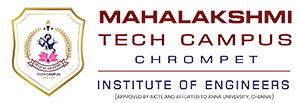
Table of Contents
Innovations in Engineering: The Unique Role of Research Scholars
The world of engineering is undergoing a seismic shift, spurred on by groundbreaking innovations in engineering and driven by the relentless curiosity of research scholars. These pioneers are the backbone of progress, transforming theoretical concepts into real-world solutions that redefine industries.
From sustainable materials to AI-driven systems, engineering research is the catalyst for tomorrow’s technologies. This blog explores how research scholars are shaping the future and why their role is indispensable in advancing research in engineering.
The Essence of Engineering Research
Engineering research is the systematic exploration of ideas, materials, and processes to solve complex challenges. Unlike routine problem-solving, it demands creativity, critical thinking, and a deep understanding of scientific principles. Engineering research dissect problems at their core, whether designing earthquake-resistant infrastructure or optimizing renewable energy systems.
Key areas where engineering research thrives include:
- Advanced Materials: Developing lightweight alloys for aerospace or self-healing concrete for sustainable construction.
- Artificial Intelligence: Training ML models to predict machinery failures or automate design processes.
- Green Technologies: Innovating carbon capture systems and biodegradable polymers.
By pushing boundaries, research scholars turn abstract hypotheses into tangible advancements that benefit society.
Driving Innovations in Engineering: Trends Shaping 2025
The year 2025 promises transformative innovations in engineering, many spearheaded by these scholars. Let’s explore the trends redefining the field:
1. AI and Machine Learning Integration
From predictive maintenance in manufacturing to generative design tools, AI is revolutionizing workflows. Researchers are training algorithms to optimize energy grids and even simulate climate change impacts.
2. Sustainable Engineering Practices
With climate urgency, research in engineering prioritizes eco-friendly solutions. MIT’s lab-grown wood research paper published in 2022 and recycled concrete are examples of sustainable materials reducing deforestation and emissions.
3. Quantum Computing
Though nascent, quantum computing could solve problems deemed impossible for classical computers. Research scholars are exploring its applications in cryptography, drug discovery, and traffic optimization.
4. IoT and Smart Infrastructure
Smart sensors embedded in bridges or factories enable real-time monitoring, preventing disasters. Engineering research here focuses on enhancing IoT security and scalability.
5. Collaborative Robotics
Cobots (collaborative robots) work alongside humans in factories and hospitals. Research is going to refine their AI to improve precision in surgeries and hazardous environment operations.
The Multifaceted Role of Research Scholars
Research scholars wear many hats: innovator, analyst, and visionary. Their responsibilities include:
- Identifying Gaps: Pinpointing industry challenges, like energy inefficiencies or material limitations.
- Designing Experiments: Creating prototypes, such as 3D-printed lab-grown wood or AI-driven drones.
- Collaborating Across Disciplines: Partnering with data scientists, policymakers, and industry leaders.
- Publishing Findings: Sharing breakthroughs via journals and conferences to drive global progress.
For instance, researchers at programs like Mahalakshmi Tech Campus’s Research Nexus receive mentorship and funding to tackle projects ranging from clean energy to biomedical devices.
Case Study of Turning Research Ideas to Reality
Consider MIT’s 2022 breakthrough in lab-grown wood. Research scientists extracted cells from zinnia plants, 3D-printed them into custom shapes, and cultivated them into wood-like structures—no deforestation required. Researchers have now shown that by modifying specific chemicals during the growth process, they can precisely regulate the physical and mechanical properties of lab-grown plant materials, including stiffness and density.
While still in its early stages, this study highlights the potential to engineer plant-based materials with customized characteristics. In the future, this could allow scientists to cultivate wood products tailored for specific applications, such as enhanced strength for structural support in buildings or optimized thermal properties for improved energy efficiency in homes.
This innovation in engineering could revolutionize sustainable manufacturing, offering a blueprint for eco-friendly furniture, construction materials, and more. Such achievements underscore how research in engineering bridges imagination and impact, proving that research in engineering is one of the primary architects of tomorrow.
Challenges and Opportunities in Research Engineering
While rewarding, engineering research isn’t without hurdles:
Funding Constraints: Securing funding for innovative projects can be challenging due to budget cuts at various levels of government and institutions globally. Many researchers face intense competition for grants as funding bodies prioritize projects with clear societal benefits or commercial viability.
As highlighted by UKRI’s recent initiatives to address these challenges through multimillion-pound funding boosts for interdisciplinary projects, it’s crucial for researchers to enhance their grant-writing skills and build strong reputations within their fields to improve their chances of obtaining funding.
Interdisciplinary Complexity: The nature of modern engineering problems often requires knowledge from multiple disciplines—be it computer science for AI applications or biology for bioengineering projects. This complexity can complicate collaboration among experts from different fields but also opens up new avenues for innovation when these barriers are overcome. Institutions are increasingly encouraging interdisciplinary research through collaborative programs that promote knowledge sharing across domains.
Rapid Technological Obsolescence: In today’s fast-paced technological landscape, staying updated with the latest advancements is essential but challenging. Technologies evolve quickly; what was cutting-edge yesterday may become outdated tomorrow. Researchers must continuously engage with ongoing education and professional development opportunities to remain relevant in their fields.
Yet, the opportunities outweigh the challenges:
- Global Impact: Addressing crises like climate change and healthcare disparities.
- Career Growth: Leading R&D teams or launching startups.
- Legacy: Leaving a lasting mark on technology and society.
How to Embark on Your Journey as a Research Scholar
- Pursue Advanced Degrees: Specialize through master’s or PhD programs. Institutions like Mahalakshmi Tech Campus offer courses blending AI and Data Science Engineering.
- Join Research Communities: Programs like Research Nexus in MTC provide funding, mentorship, and networking.
- Focus on Emerging Fields: Quantum computing, synthetic biology, and green tech are ripe for exploration.
- Collaborate and Publish: Engage with peers and share findings to build credibility.
Conclusion
Research scholars are the unsung heroes behind every innovation in engineering. Their work not only solves today’s problems but also lays the groundwork for future breakthroughs. Whether it’s lab-grown wood or AI-powered smart cities, engineering research thrives on their curiosity and perseverance.
To stand out in this dynamic field, embrace the role of a research scholar. Dive into research in engineering, challenge conventions, and pioneer solutions that redefine what’s possible. The world needs more thinkers who dare to transform ideas into revolutions.




